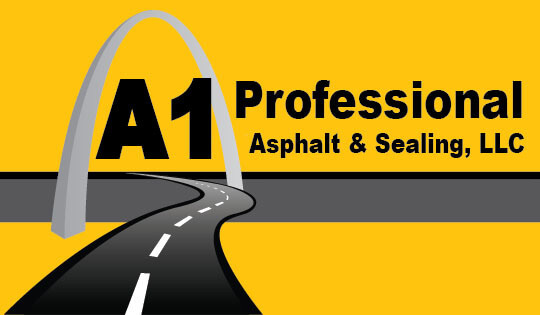The Facts About A1 Professional Asphalt & Sealing Llc Revealed
The smart Trick of A1 Professional Asphalt & Sealing Llc That Nobody is Discussing
Table of ContentsGetting The A1 Professional Asphalt & Sealing Llc To WorkThe Single Strategy To Use For A1 Professional Asphalt & Sealing LlcAll About A1 Professional Asphalt & Sealing LlcGetting The A1 Professional Asphalt & Sealing Llc To WorkNot known Factual Statements About A1 Professional Asphalt & Sealing Llc

The oil in a vehicle engine is not just oil. It has a variety of additives to boost the vehicle's efficiency. These include polymers, thickness modifiers, heat stabilizers, extra lubricants, and wear ingredients. The REOB contains all the ingredients that were in the waste oil as well as the wear steels from the engine (generally iron and copper).
Nevertheless, by making many blends making use of various REOB samples and different asphalt binders, the variants greatly can be balanced out. Numerous States provided samples of recognized REOB make-up to TFHRC scientists, that evaluated the samples to contrast the portion of included (recognized) REOB to the located (tested) amount. The evaluations revealed a similar percent of included and located REOB.
Facts About A1 Professional Asphalt & Sealing Llc Revealed
None of those States recognized that the asphalt they were buying contained REOB. One State urged its samples had no REOB - https://filesharingtalk.com/members/595309-a1asphaltseal.
Of the 1,532 samples checked, 12 percent had REOB, and some had significantly high degrees of it at 1020 percent. The highest degree was 34 percent in an example from Texas, which TxDOT had actually utilized in a patching compound. This screening likewise revealed the presence of phosphoric acid in 11 percent of the examples, and 2 percent had ground tire rubber.
Two years ago at TRB's yearly conference, the Federal scientists held an REOB workshop and offered the searchings for of their lab examinations to a standing room-only crowd. Some agencies do not especially ban REOB, they do enforce physical tests that avert its useeffectively a ban. Others do not outlaw it by spec, yet have contracts with asphalt suppliers to stay clear of making use of REOB
How A1 Professional Asphalt & Sealing Llc can Save You Time, Stress, and Money.
Ohio and Texas limitation degrees to less than 5 percent of the asphalt. To create a dependable test technique that all States can utilize, the TFHRC scientists set up a round-robin examination strategy.
In total amount, the scientists prepared and delivered 720 blends. The individuals are checking the examples separately utilizing the guidelines supplied by the TFHRC scientists. The round-robin testing is nearly finished, and TFHRC remains in the procedure of gathering the results. The output will be a proposed AASHTO examination approach that any kind of State can embrace and utilize (asphalt paving repairs).
The pavement with REOB, which lies 0.6 mile (1 kilometer) from the sidewalk without REOB, has similar subgrade, traffic thickness, and environment. However, the segment of Highway655 with 5 to 10 percent REOB revealed significant cracking. In this example, the visibility of REOB was the determined reason of splitting at a low temperatures.
"In our experience in Canada, also small amounts of 23 percent can be a problem." In a similar way, an area of test pavement in Minnesota (MN1-4) located to consist of REOB also split prematurely. The pavement carried out well for the initial 3 to 4 years, however after that started to split. This sidewalk is also based on reduced temperatures.
Not known Details About A1 Professional Asphalt & Sealing Llc
The tests were not considerable, yet they revealed that at degrees of 6 percent or even more, the tensile stamina of the asphalt dropped substantially. At a degree of 3.5 percent REOB, the variation in the physical test methods was above the effect of REOB. It was hard for scientists to examine whether REOB was present. https://www.evernote.com/shard/s452/sh/55e605bb-a7ab-087f-2bbb-4cc3e94c5474/UvHUCPgKcZ18HESRJSnkIId24flOmNta2DAPD8UMVaYOk5-3NsYjse3oCA.

One binder specification thought about is the distinction between the reduced temperature level critical specification temperature for rigidity (S) in the flexing light beam rheometer and the flexing beam of light rheometer creep slope (m-value) noted as Tcritical. TC = TC (S) TC (m-value). Evaluation of this criterion is still recurring. 2 independent research study teams, one from AASHTO and the other from the Asphalt Institute, ended that even more research study is needed on using REOB in asphalt.
Previously, all asphalt screening measured design properties such as rigidity. These tests do not reveal what materials had been contributed to the asphalt. One example received throughout the TFHRC research study had a really odd analysis. The sample had the following examination outcomes: Superpave PG 64-28 with a heat quality of 67.3 Tcritical on the bending light beam rheometer was 6.7 degrees Celsius.

The Best Strategy To Use For A1 Professional Asphalt & Sealing Llc
These results demonstrate there are weaknesses in the standardized design screening methods that might be manipulated. The manufacturer might have an economic benefit and the product passes all the standard examinations, however the product may not be useful to making sure long-lasting performance. To resolve this issue and the expansion of brand-new asphalt ingredients and extenders, TFHRC is starting a recommended you read research program to make use of portable spectroscopic devices, x-ray fluorescence spectroscopy, and Fourier transform infrared spectroscopy to make it possible for evaluations to be carried out in the field instead of needing to take examples back to the lab.